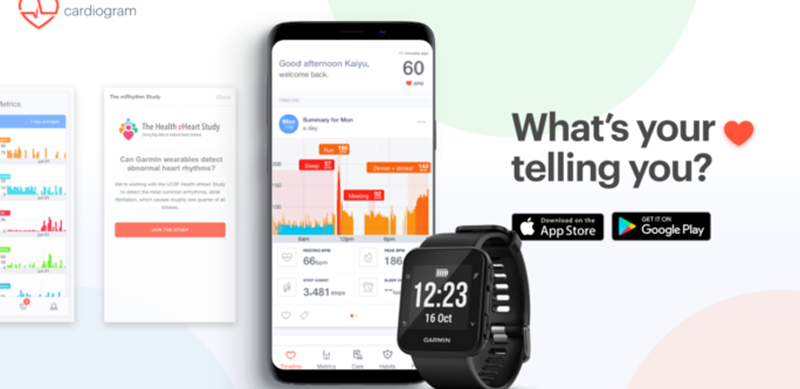Cardiogram, maker of health app for smartwatches, launched a feature that lets wearer’s monitor a loved one’s wearable data across Android and iOS devices. Available on Cardiogram premium, the two new features – “Family Mode” and “Share with Doctor” – are interoperable between Apple Watches, Garmin watches and devices running Google’s WearOS platform.
Read more Cardiogram Joins Garmin to Integrate its Heart Health App into Garmin Wearables
Using a link, users can view the information within the Cardiogram app and a family member can also switch into a relative’s profile and act on his or her behalf to enter the right insurance information, for instance.
“We built this feature for all the adult children who bought their aging parents a wearable for the holidays. Many people have written in to request a feature that lets them monitor their parents’ data remotely (with permission), and even act on their behalf in order to help them manage their health between doctors’ appointments,” Brandon Ballinger, cofounder of Cardiogram, wrote in an email to MobiHealthNews. “Likewise, many people with chronic conditions — sleep apnea, hypertension, diabetes and atrial fibrillation — have written in to request a consolidated report to share with their doctor.”

Family mode feature allows people chosen by the user to view health data like step count, heart rate, workout and sleep patterns.
Share with Doctor feature lets users get a PDF of their data to share with a physician.
Cardiogram’s algorithms can accurately detect health conditions such as diabetes, hypertension, sleep apnea, and atrial fibrillation using a heart rate sensor and a deep neural network called DeepHeart.
Read more Wearables Now Provide Vital Health Data and Warn Users of Potentially Life-Threatening Conditions
With the new features, Cardiogram aims to make it easier for caregivers to track and monitor loved ones. Especially, the company wants to help adult children monitor the health of their parents.
Cardiogram has been active in the wearable space since 2016, when it was formed by two former Google technologists Brandon Ballinger and Johnson Hsieh.












